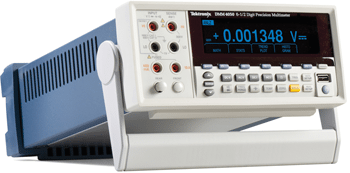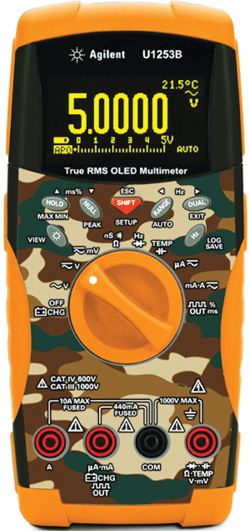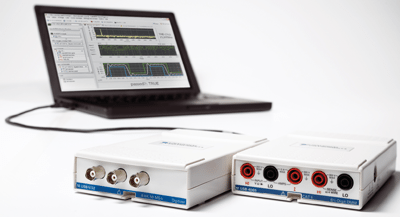
Green says, “Manufacturers have added USB and Ethernet interfaces to DMMs. Some have added the LXI protocol and incorporated Web browsers into the DMM to include data logging software and control of the DMM through a PC browser on the DMM’s webpage.”
Another form-factor gaining importance today is PC-based multimeters. Aggarwal says, “PC-based technologies don’t just control the instruments, but the PC itself becomes the instrument.”
In PC-based multimeters, there is a piece of hardware that can handle a lot of calculations and additional signal processing is done by the software. These are extremely easy-to-use, flexible systems bringing the advantage of bigger displays with more parameters and graphs, and data logging for further analysis.
Display technologies
Display is a key part of any T&M instrument. It is the first parameter or specification that appeals to the user and makes the instrument more user-friendly.

“Generally, a digital multimeter has a large and intuitive display that is simple to use and easy to read,” says Sai Venkat, Pacific Marketing, Tektronix.
The earlier 8-LED displays have now been replaced with LCD and organic LED (OLED) displays in many devices. Siddique shares, “DMMs with unique OLED display provide 160-degree viewing angle and 2000:1 contrast ratio. That means you can read razor-sharp readings in pitch-dark and off-angle situations.”
“DMMs show more information (graphics or statistics on measurements) on their displays. Reading rate has also increased substantially over the years,” cites Green.
Communication interfaces
Connectivity is a key specification of every equipment today. There is a need to transfer data to store and analyse as well as view on a bigger screen. This has made wired and wireless connectivity an important component of the multimeter circuitry.
USB and Ethernet connectivity allows direct transfer of readings of various parameters. In PC-based equipment, all the features of a computer, like Internet connectivity, can be effectively used to share test and measurement results.
Innovative concepts like detachable displays or remote displays have gained popularity in the industry. A wireless, removable magnetic display allows you to be 9 metres (30 feet) away from the measurement point and is perfect for those difficult measurements where viewing the display is challenging. It gives users ultimate flexibility in unusual test situations. There is no more juggling of leads and the meter while stretching into tight spots. This technology uses a 2.4GHz ISM band wireless transmitter to immediately send measurements to the detached display, improving safety and increasing productivity for today’s busy industrial and commercial electricians and electronic technicians.
Improved electronics circuitry
Refinement of the design using new technology tools has increased the performance of T&M equipment. With better circuitry and electronics, a lot of features can be integrated now. So while earlier multimeters could do only voltage and current measurements, new DMMs have far more capabilities.
Joshi cites, “Better circuitry and electronics have improved the measurement accuracy. Older analogue meters had basic accuracies of 5 to 10 per cent. On the other hand, today’s portable DMMs have accuracies as good as ±0.005 per cent, while bench-top instruments have accuracies in single-digit parts per million figures.”

DMM itself being an electronic device, it is necessary that its own electronics does not interfere with the measurements. “All digital meters contain a battery to power the display. So they use virtually no power from the circuit under test. This means that on their DC voltage ranges, they have a very high resistance (input impedance) of about 10 mega-ohms, and are very unlikely to affect the circuit under test,” explains Joshi.
The design of the electronic circuitry has well adopted the use of every advanced piece of silicon available in the market. “Faster and more capable microprocessors help increase data transfer rates. Communication chips that handle USB and Ethernet are common. Scalable FPGAs are used along with ASICs to enhance both analogue and digital processing. FPGAs and ASICs allow for more measurements and more computations. Some instruments have USB ports for USB memory sticks, so data can be captured and transferred to any computer,” says Green.
Some of the design considerations include the type of measurement and readings being displayed. Manjunath says, “Conventional DMMs that do not follow the true-RMS measurement are accurate as long as the AC signal is completely sinusoidal in shape. But today, due to increased use of electronic control equipment, we hardly find any sinusoidal waveform in industrial and commercial environments. This highly inaccurate way of measurement may lead to failure in design, operation and maintenance of electrical equipment and cause severe damage to equipment and personal safety. So a true-RMS multimeter is a must.”





